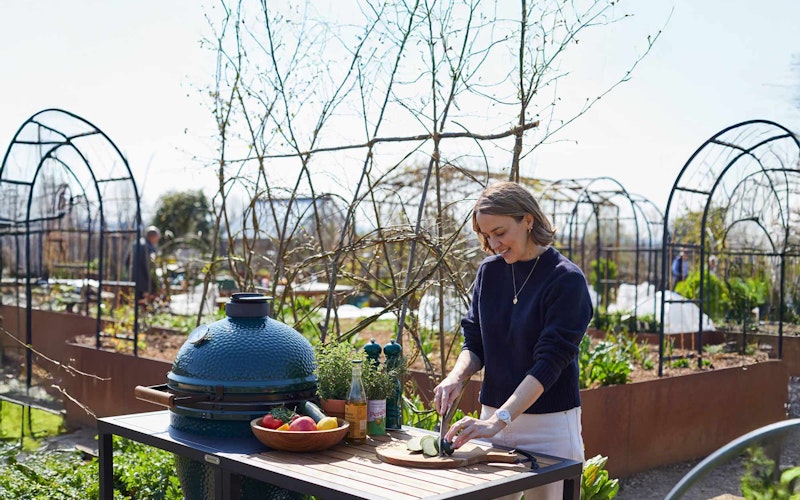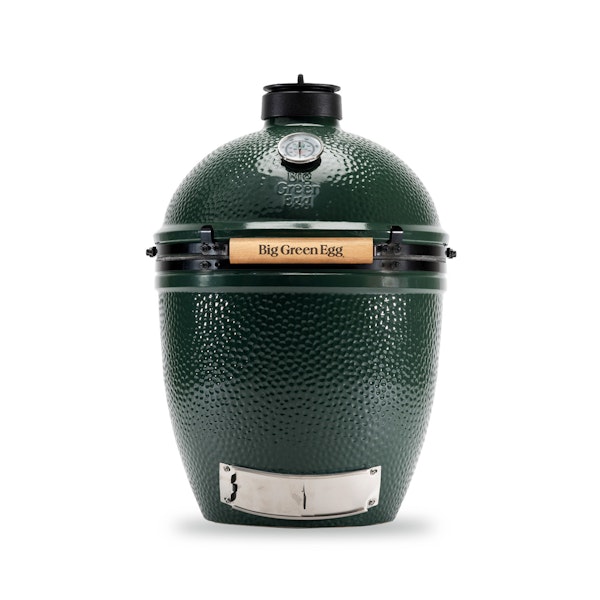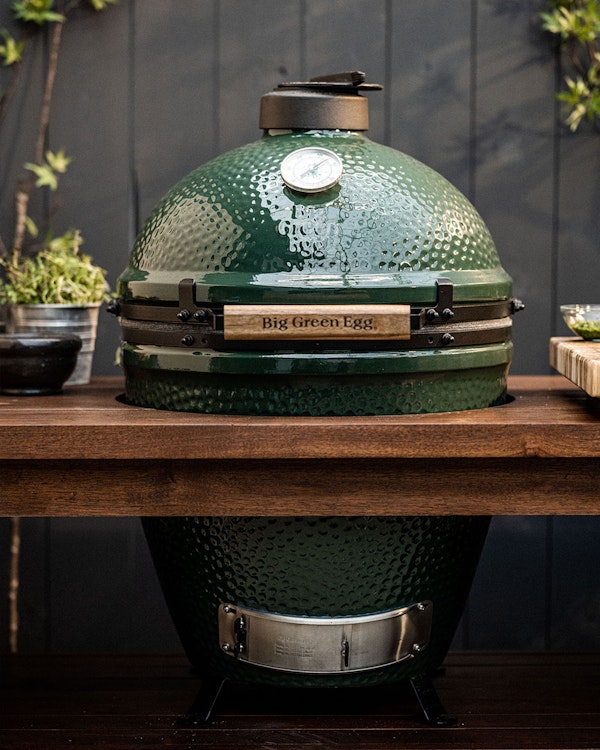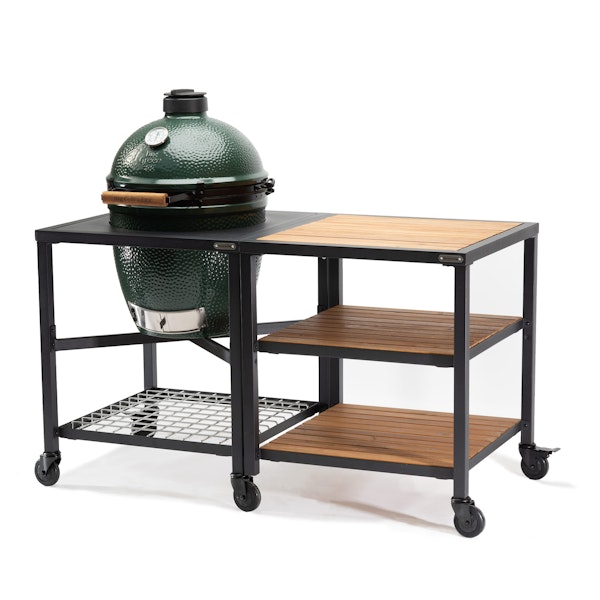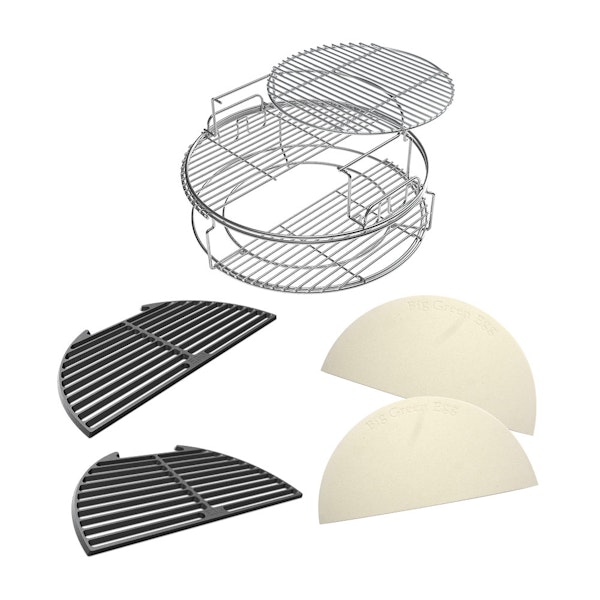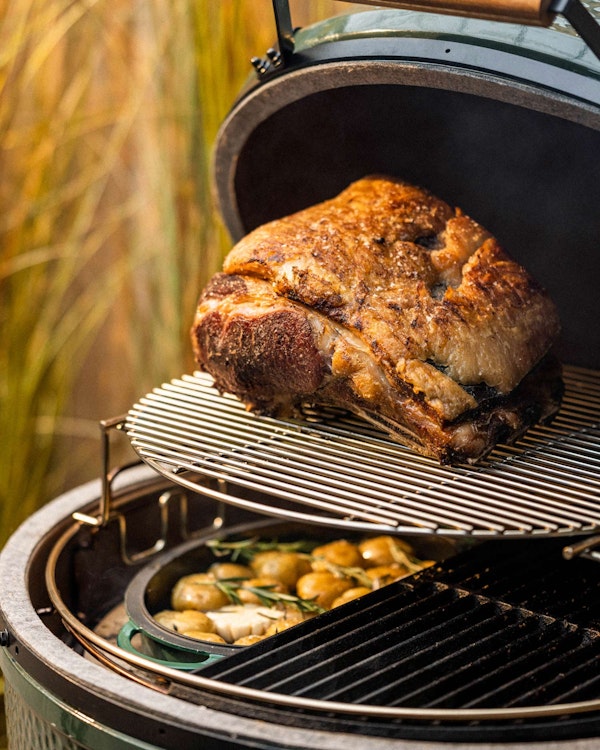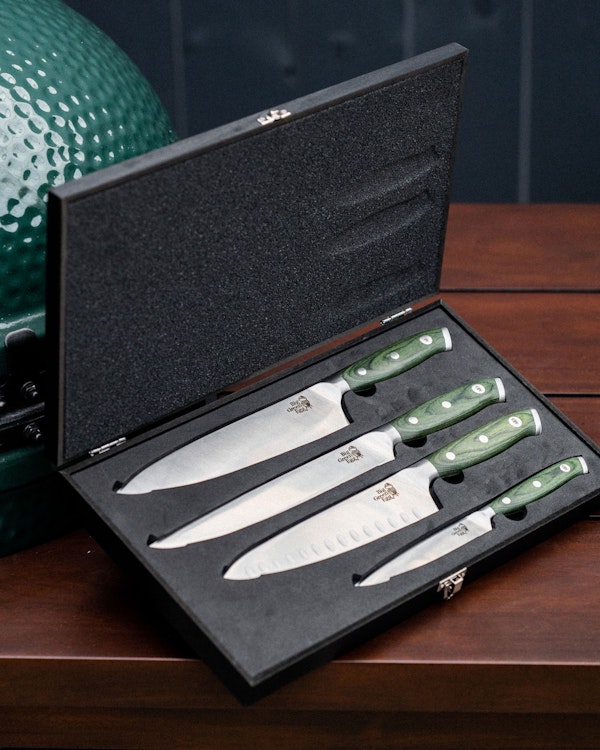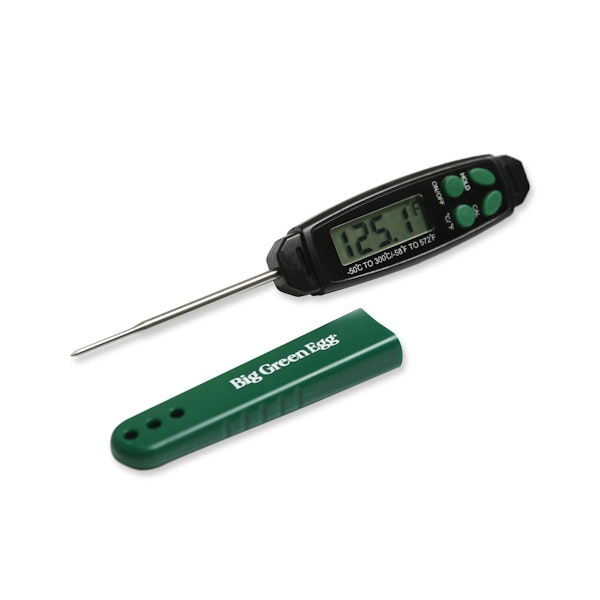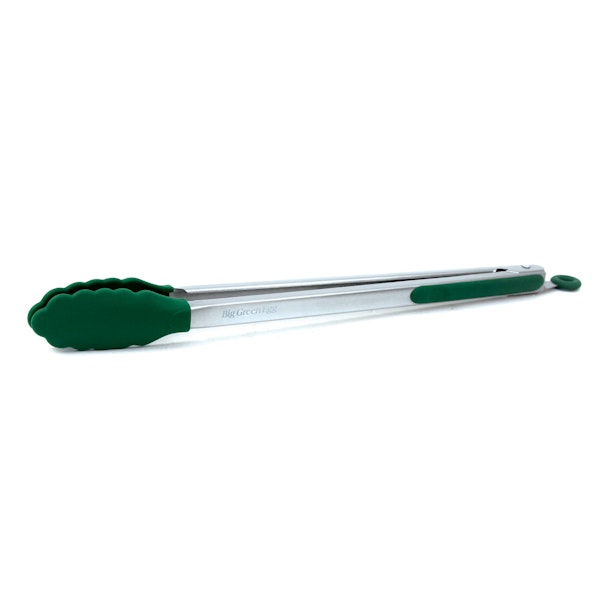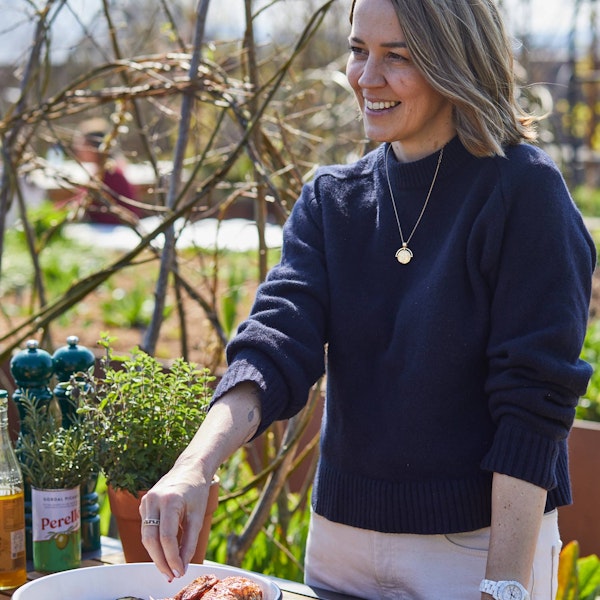How did you come to catch the gardening bug?
I came to gardening late. I wasn’t interested as a kid. My parents are keen gardeners, but it wasn’t until I started growing tomatoes on my balcony in Earl’s Court after I’d finished university that I got bitten by the bug. In common with a lot of people, I didn’t really care until I had my own space. I lived in London for about 10 years, and only ever had tiny outdoor spaces – a balcony, a courtyard, a windowsill – but then I moved to suburbia and had a small garden to look after. I still live in suburbia, and now I have a medium-sized garden. I’d say my love of gardening grew in proportion with the outdoor space I had to garden in!
What was it you fell in love with?
There’s something so rewarding about planting a seed, watching it grow, watching it flower – a real sense of accomplishment. Also, I trained as a counsellor in a past life, and I’m very aware of how good it is for mental health, being outside, getting your hands in the soil, listening to the birds. For my own wellbeing, it’s been incredible. I worked in legal marketing for 10 years and then retrained as a gardener after I had kids. If I was going to pay extortionate childcare fees, I wanted to be doing a job I loved, rather than one that gave me a sense of dread every Sunday night. I wanted to work for myself and have the flexibility to work around the kids. It was motherhood that gave me the permission to pursue a career I really loved, which I know is a real privilege.
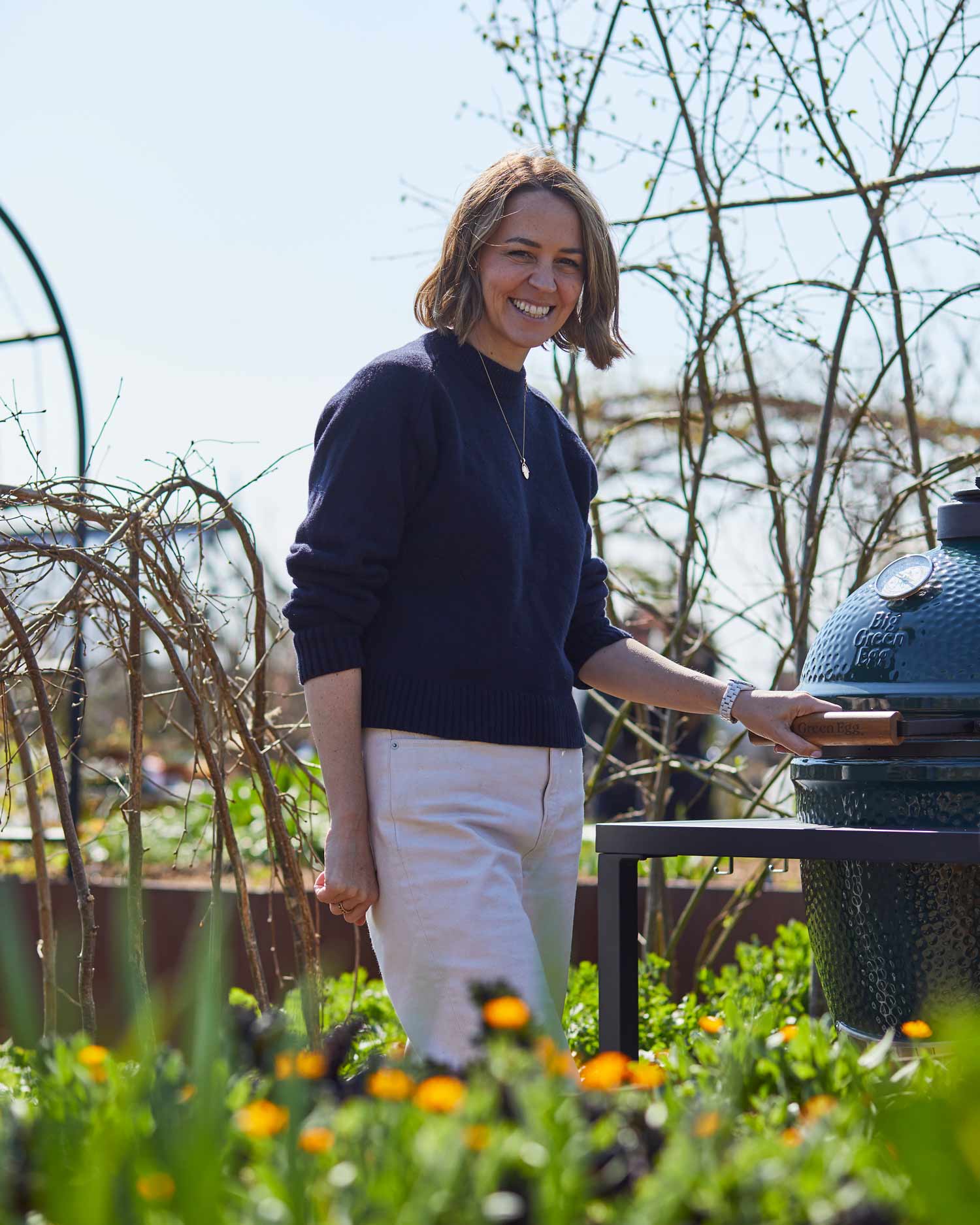
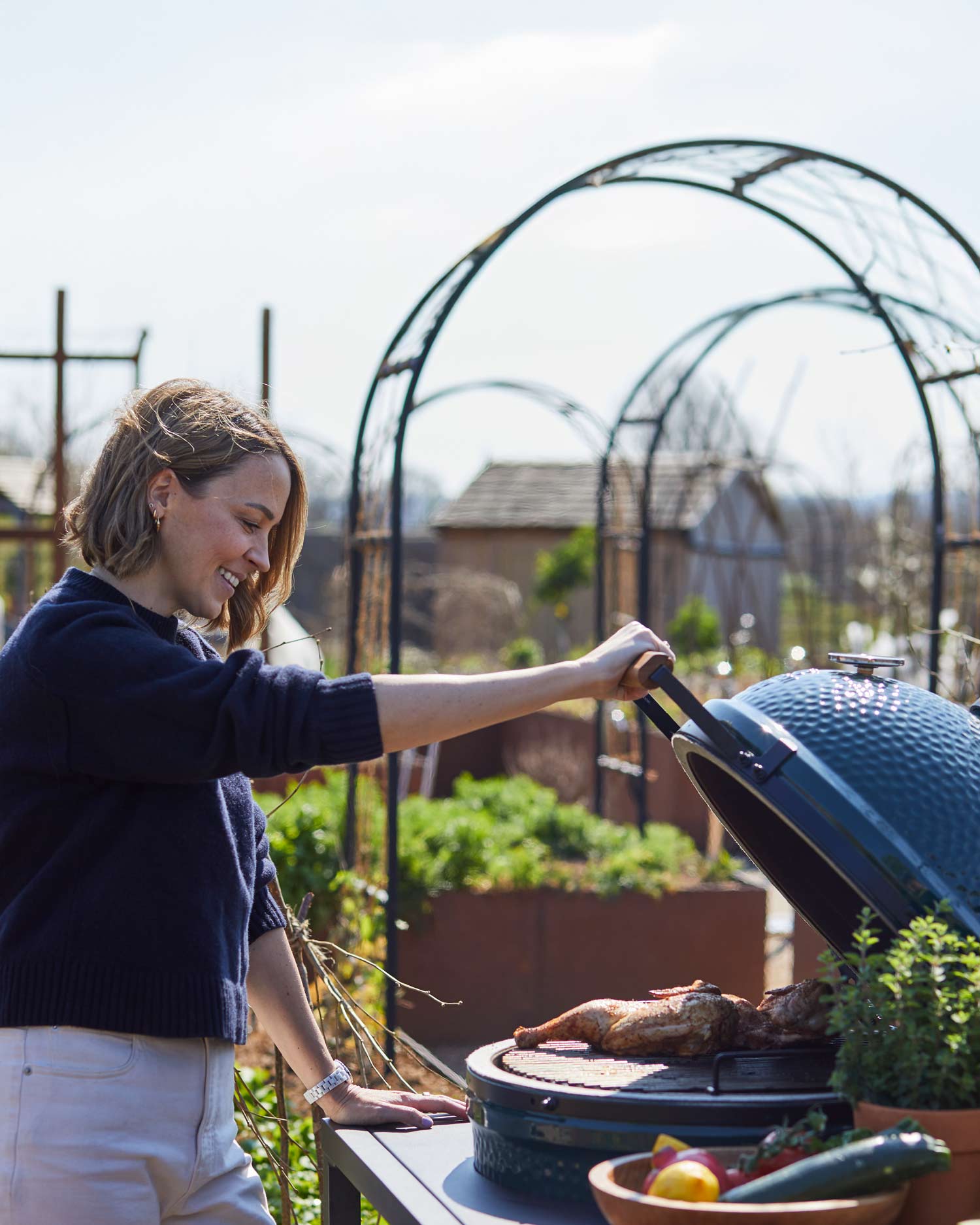
What does training as a garden designer involve?
It’s different for everyone. Some courses are short, some are a year, some are three years. The one I did was at the English Gardening School, and that was short – three or four months, which was all I could get away with, with two children under the age of two. I was really just dipping a toe in. After that I studied practical horticulture at Merrist Wood, a day a week for several months. Then you do so much learning on the job. I knew nothing about garden design before I started, and, my god, the mistakes I made! I cringe when I think about it: scratching away in the earth with an old trowel, stuffing a plant in with half the crown poking out, and wondering why it didn’t grow!
Now you’re established, are there common threads that run through your designs?
Our ethos as a studio is that we want every garden to be beautiful, but also really useable. The first thing I’ll ask clients is: “How are you going to use your garden?” Some want to entertain loads of people, some want a place for the kids to play, a few green-thumbed people – although not many! – want to actively garden their garden. Whatever we do, we’ll always create a stunning garden that can be a haven for insects and pollinators for years to come. A garden isn’t finished when we finish with it – it’s only just starting. Plants can take years to mature, and they’re ever-changing, so for us it’s all about longevity. The materials are carefully chosen, and we try to make them as timeless as possible, while also echoing what’s going on with the architecture and the interiors. Everything needs to feel cohesive and harmonious. Every garden is site-specific, so you’ve got to consider the context.
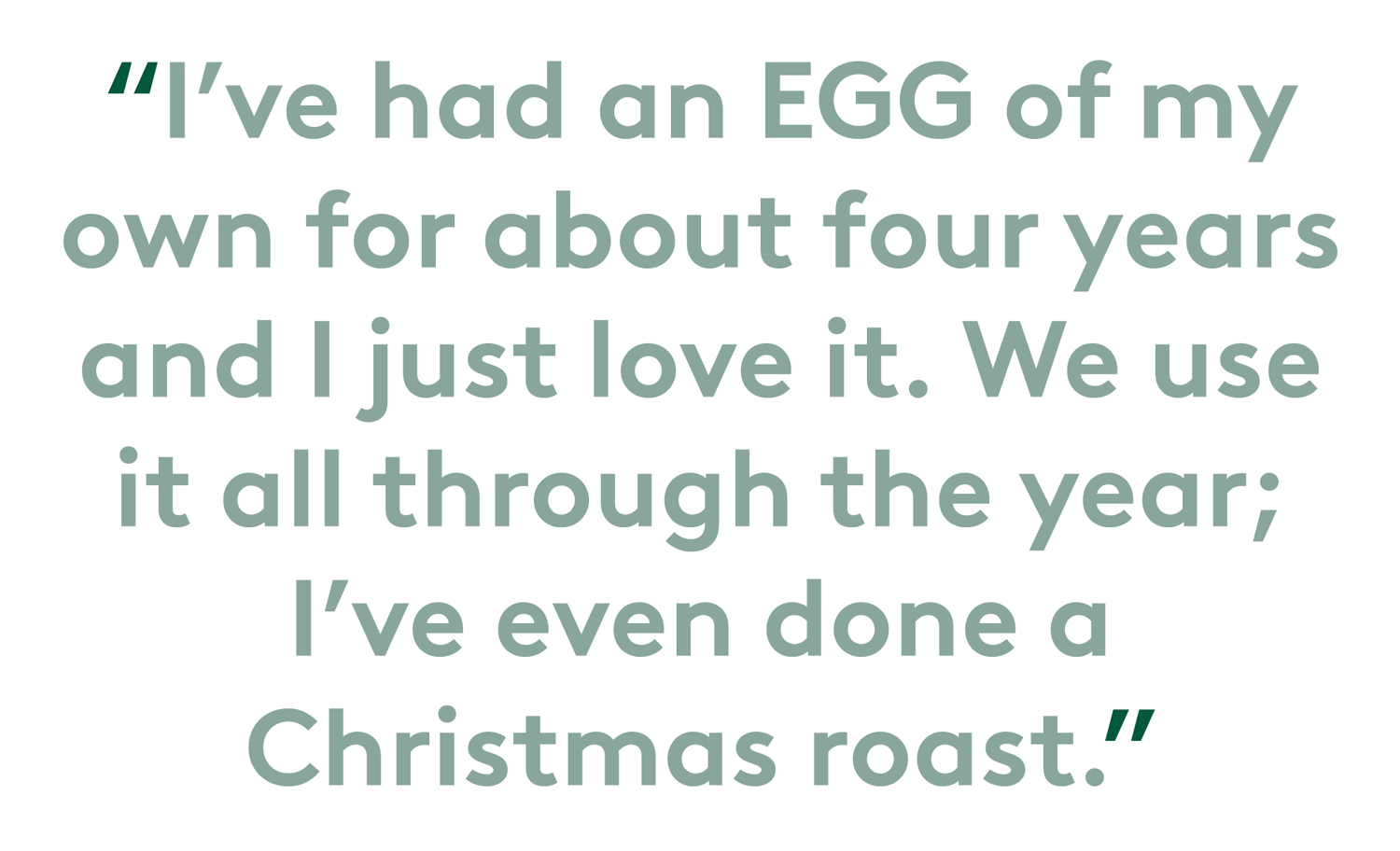
How often will your designs involve outdoor cooking and eating?
I would say it’s the number one thing that’s requested. We put outdoor kitchens into just about every garden we design. And we put Big Green Eggs into about 99 percent of them!
Why EGGs specifically?
It’s a mixture of things. A lot of clients care about great cooking and great food, and the Big Green Egg is renowned for the flavours it produces. But also, aesthetically they’re very beautiful. From a design perspective, the fact that they’re that deep green could not be better for a garden space. It’s not a garish colour that fights with its surroundings – it just eases in, without competing. I’ve had an EGG of my own for about four years and I just love it. We use it all through the year; I’ve even done a Christmas roast. For us, like a lot of people, Covid changed outdoor cooking from something where you’d just wheel out a tatty old barbecue once a year to something at the very heart of our entertaining space.
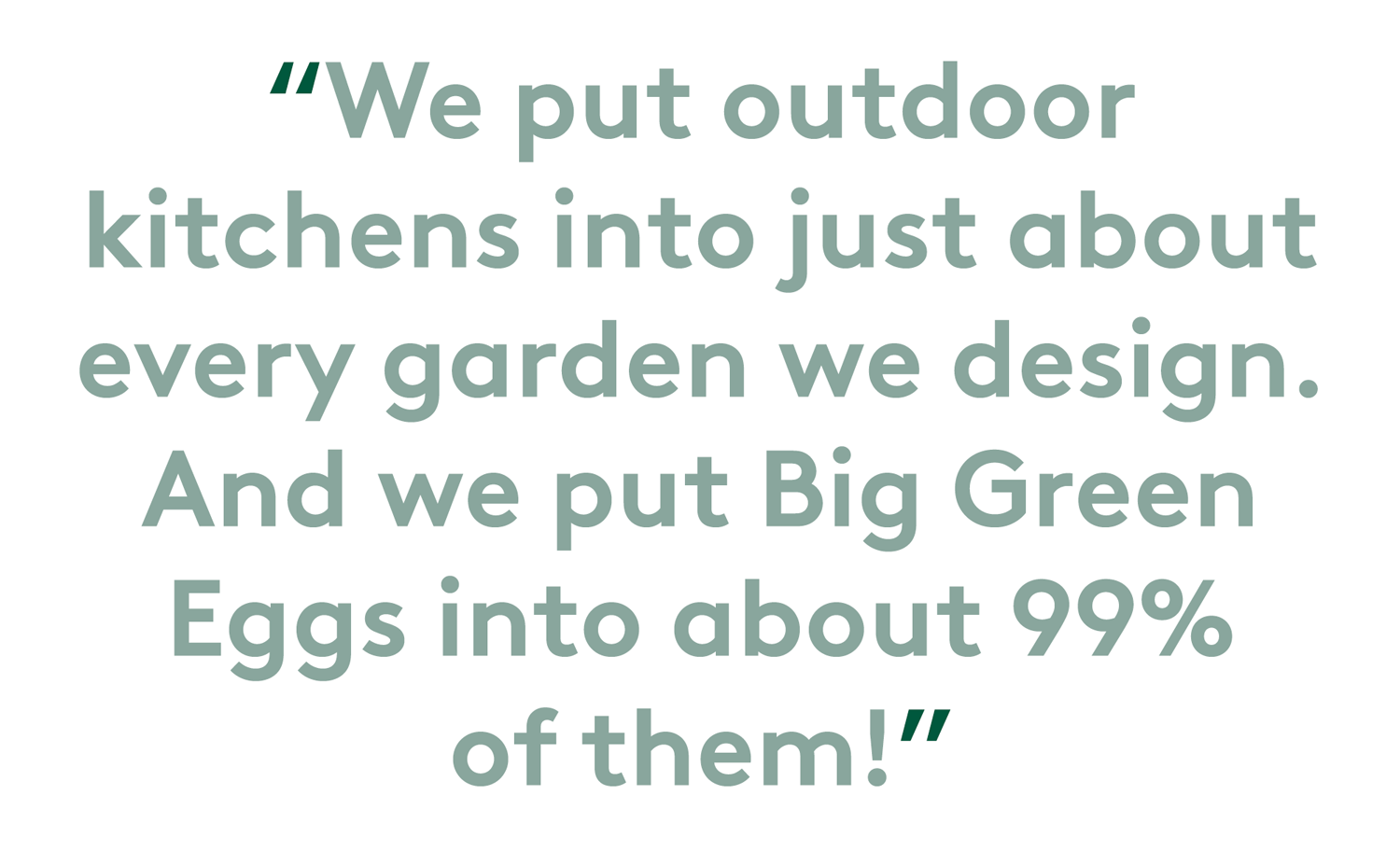
What are the biggest challenges involved in accommodating alfresco cooking?
One of the biggest mistakes we see is people making these spaces too large – the outdoor kitchen, the dining table, the seating area, all in one big sea of paving. What we like to do is think of each element as an outdoor room, then wrap that in plants so it’s its own space – for example, we’ll split the outdoor sofa space from the dining area, rather than creating what looks like a massive furniture showroom. The other challenge is that a lot of people want to cook year-round, so we’re being asked for weather-proof outdoor kitchens, which can then start to be more like indoor kitchens. I think it’s better to own the fact that an outdoor kitchen is an outdoor kitchen, and it’s okay to be out in all weathers. That’s part of the fun of it.
Are edible plants a major part of your arsenal?
Absolutely. It’s a real trend at the moment, the rise of the ‘edimentals’. We encourage clients to either have individual growth spaces – maybe some raised beds to grow vegetables or herbs – or else weave edimentals through the garden. I love using fennel, for example. It’s such a textural, frothy, fluffy plant, and it smells amazing – you want to brush against it and get that aniseedy tang on your fingers. Nasturtiums, as well, are beautiful in salads, or you’ve got vegetables like kale, which can look incredible, and chard, with its beautiful, bright stems. By the outdoor kitchen, if the sun allows, we’ll grow herbs like rosemary and sage right near the Big Green Egg, so they’re to hand when you’re cooking. If something is even slightly inconvenient, you won’t use it as much.
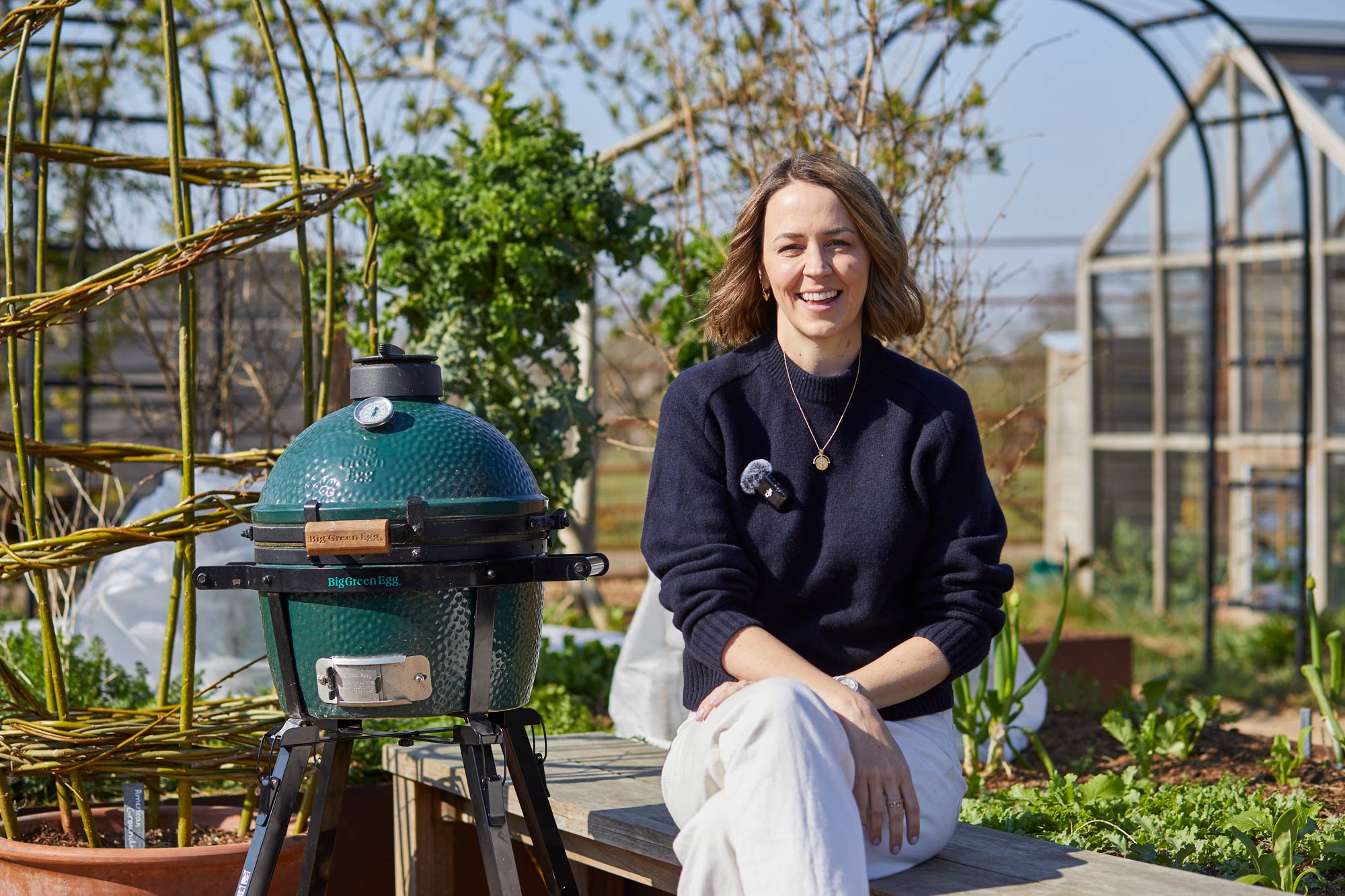
How connected are interior design and garden design?
I host a podcast called The Ins and Outs with my friend Jojo Barr, who runs House Nine Design, a really fantastic interior design studio. We feel that the house and garden are completely connected, and should be seen as part of one thing, rather than as two separate spaces. It’s very light-hearted – we talk about our lives and answer listener questions. I’m learning constantly, because I know nothing about interior design, and Jojo would freely say she knows nothing about gardening or garden design, but the two do go hand in hand. We have windows everywhere now, we have more glazing by the day, and if what you spend your life looking out on is the garden, why wouldn’t you make sure it looks as good as the rest of your home?
